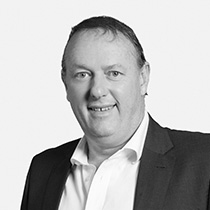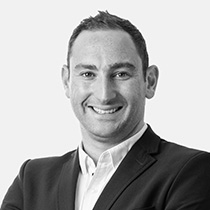The Fund increased by 12.8% in USD in the fourth quarter of 2022 (Q4-22). This improvement in short-term performance is encouraging and we remain excited about the Fund’s future prospects as we feel the assets owned remain extremely attractively priced.
There are extensive risks globally, most notably the significant inflation still presents across much of the world, widespread monetary tightening, and the ongoing war in Ukraine. When, and at what level, inflation normalises is a key area of debate globally, along with where interest rates will settle. Accurately predicting this is an incredibly difficult task in our view, and whilst these factors have an impact on all asset prices, we have always strived to value assets using normalised through-the-cycle inflation and interest rate assumptions (and hence valuation multiples and discount rates) instead of calibrating our valuation methodology to short-term point in time levels. This is aligned to our long-term valuation focused investment philosophy which has been consistent for nearly three decades.
We are not naïve to these changes and the impact they can have on investor psychology and risk appetite, but in our view, this provides an advantage to long-term investors who apply a consistent and robust philosophy. We believe that the more recent improvement in performance can be attributed to this approach beginning to bear some fruit.
We remain disappointed with the Fund’s last two years of performance but believe that the collection of assets held today offers extremely compelling long-term risk-adjusted returns with which to deliver on its goal of compounding capital well ahead of inflation. With this in mind, the Fund’s weighted average equity upside is currently 70%, which remains one of the highest levels since inception nearly 23 years ago. Beyond this, the weighted equity five-year IRR (internal rate of return) is 19% and weighted equity free cash flow (FCF) yield for stocks owned is 5%. Using the rand-denominated Fund’s long-term track record (expressed in USD) as proxy*, the Fund has generated a return of -1.1% per annum (p.a.) over the last five years, 3.3% p.a. over 10 years, and 7.8% p.a. since inception over 20 years ago.
Something that remains front of mind when managing the Fund is the question of whether we are entering a period of structurally higher interest rates in the developed world. Financial markets have benefited from a four-decade run of declining interest rates, which has undoubtedly provided a tailwind for asset prices. This trend has now reversed, and it remains uncertain if the days of ultra-low interest rates will return. If interest rates remain at higher levels into the future, this will make life difficult for many businesses which relied on low-cost funding to drive M&A or for those with elevated levels of financial gearing. Capital once again has a cost, and thus it will be even more important to invest in businesses that deliver superior and consistent operational results as opposed to those that might have used financial engineering to boost historic results.
In a world that faces a broad range of future outcomes and elevated risks, we continue to have diversified exposure to a broad range of businesses in different industries with a diverse set of underlying drivers. Whilst the exposure is diverse, each business has been selected using a bottom-up approach with the requirement for inclusion being the prospect of high risk-adjusted returns into the future. Historically it was tough to find yield and attractively valued companies in the world, but there is now an abundance, making us excited about the prospect of robust future returns, notwithstanding the bearish sentiment present in markets today.
During the quarter the largest positive contributors were Capri (+48%, 1.29% positive impact), Naspers/Prosus (+31%, 1.26% positive impact), and Airbus (+36%, 0.89 positive impact). The largest negative contributors were Amazon (-26%, 0.5% negative impact), Alphabet (-8%, 0.46% negative impact), and Meta (-11%, 0.23% negative impact).
The Fund ended the quarter with 80% net equity exposure, higher than the 72% at the end of the prior quarter. The increased equity exposure was primarily driven by us removing some put option protection (and banking profits) at the beginning of Q4-22 post a significant sell-off in equity markets.
Our negative view on global bonds continues to evolve as rates have begun to rise, with some opportunities emerging. However, these opportunities are being weighed up against increasingly attractive equity opportunities that often also come with high and growing dividend yields. We continue to hold South African (SA) government bonds that now represent 5.4% of the Fund. While SA has fiscal risks, the bonds should yield a positive return even in a scenario where bond holders take a capital haircut, which provides a level of downside protection whilst providing a ~11% return in a non-haircut scenario. We have also recently purchased a 4.2% position in short-dated US Treasuries, yielding ~4%, as a higher yield alternative to holding US dollar cash.
The Fund sold its physical gold position to fund attractive equity opportunities, with the opportunity cost of holding physical gold increasing in a higher yield world. We have retained a 1.75% holding in AngloGold Ashanti due to fundamental attractiveness of the business which trades on ~11x earnings and continues to benefit from operational improvements. The balance of the Fund is invested in cash, largely offshore.
Notable increases in position sizes (or new buys) during the quarter were Adobe (global software), and Valaris (contract drilling equipment for oil and gas).
Adobe is the global leader in creative software which is mission critical for their user base as its embedded into the daily workflow of these users. It is a business with exceptional financial metrics – 88% gross margins, 35% earnings before interest and tax margins, low capital expenditure intensity and negative working capital, resulting in FCF being consistently above 100% of accounting earnings. It is also a business that generates recurring subscription revenue with low churn, allowing it to grow consistently with a good level of predictability. It is a business we have followed for many years and wanted to own but valuation was always the hurdle. This has however changed, driven by a general sell-off in internet stocks along with their very expensive purchase of Figma, resulting in Adobe falling ~50% from its peak. The strategic rationale of the Figma acquisition is sound, in our view, and should reduce Adobe’s long-term disruption risk while expanding their addressable user base. We were therefore able to buy one of the highest quality software businesses globally for ~25x FCF which should grow by more than 15% per annum for the foreseeable future.
Valaris provides contract drilling equipment to the oil and gas industry. It is a business that has had a particularly tough time in the more recent past as their customers curtailed production growth, leading to less demand for their equipment along with the rates charged for this equipment declining. Whilst production growth is still limited from the oil majors, national oil companies are still spending to drive production growth as the oil demand outlook remains positive, notwithstanding the world's shift towards cleaner energy. This transition will most likely take time and oil demand remains diversified beyond just transport. So even with growing electric vehicle sales, other demand drivers remain positive. The lack of investment in the oil industry is becoming more pronounced as demand continues to grow, with limited supply growth resulting in a better oil price environment. This improved oil price environment, coupled with the continued investment by national oil companies to grow production, has resulted in demand for Valaris’ equipment growing again, driving high rental rates and the recommissions of previously underutilised equipment. This has driven a recovery in the earnings before interest, taxes, depreciation, and amortization (EBITDA) generation of the business, with this now running at >$100m per quarter, but still well below what we consider normal (of $250m), with conservative assumptions embedded (equipment rental rates <50% of previous peaks). The company has a market cap of ~$5bn, and no debt so we can buy the business at a 5x normal EBITDA multiple, which we consider attractive.
There remains an elevated number of unknowns today compared to the past due to a potential structural change in interest rates across the globe along with geopolitics bringing about another element of risk. We remain aware of these risks, and they are factored into our portfolio construction, but the primary focus remains bottom-up analysis of individual businesses. Against this uncertain backdrop, we remain excited about the outlook for the Fund, which has been built bottom up, with a collection of attractively priced assets to provide diversification to achieve the best risk-adjusted returns going forward in a variety of future scenarios.
*Note that this is a new fund and, as such, does not yet have a track record for the relevant periods. As it is the dollar-denominated version of the same investment strategy deployed historically in the management of the rand-denominated Coronation Global Optimum Growth ZAR Feeder Fund, we show the track record of the latter portfolio, converted to US dollars, to indicate historical results achieved by the strategy.
Disclaimer
SA retail readers
 South Africa - Personal
South Africa - Personal



